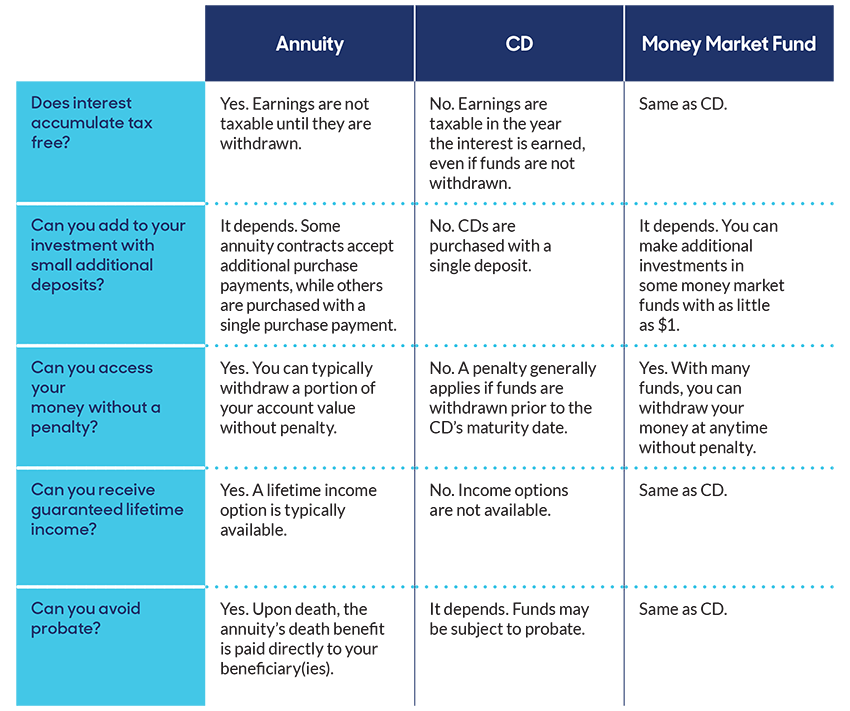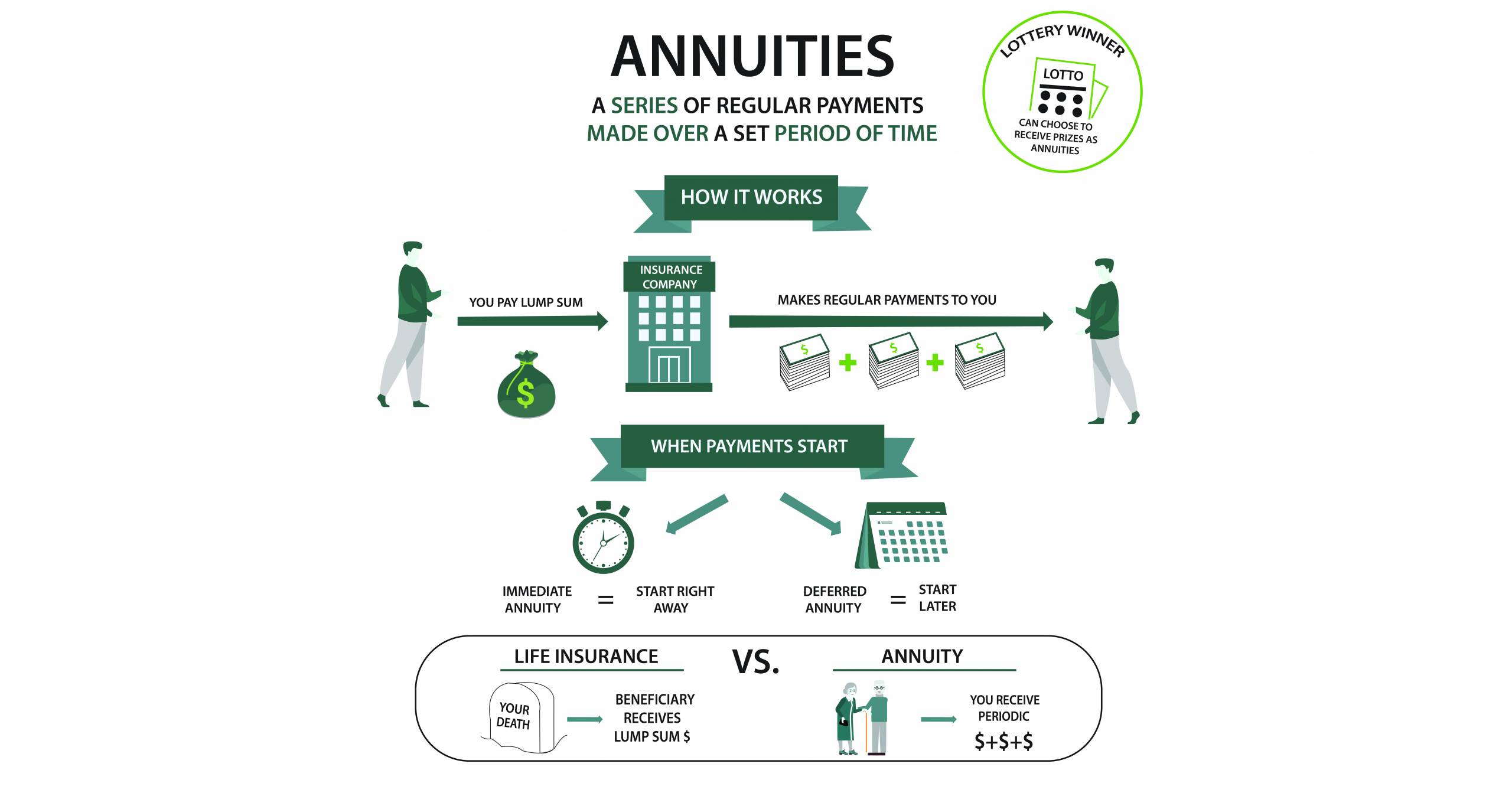All Categories
Featured
Table of Contents
The payment could be spent for development for an extended period of timea single premium deferred annuityor spent for a short time, after which payment beginsa solitary premium instant annuity. Single costs annuities are commonly moneyed by rollovers or from the sale of an appreciated property. An adaptable premium annuity is an annuity that is planned to be funded by a series of repayments.
Proprietors of taken care of annuities recognize at the time of their purchase what the value of the future cash money circulations will be that are created by the annuity. Undoubtedly, the number of cash money flows can not be understood in advance (as this relies on the contract proprietor's life-span), however the guaranteed, taken care of rate of interest rate a minimum of gives the proprietor some level of certainty of future income from the annuity.
While this difference seems simple and uncomplicated, it can significantly affect the value that an agreement owner inevitably stems from his/her annuity, and it develops considerable unpredictability for the contract proprietor - Lifetime income from annuities. It also commonly has a material influence on the degree of costs that a contract owner pays to the releasing insurance provider
Fixed annuities are typically made use of by older investors who have limited assets but that intend to offset the danger of outliving their possessions. Set annuities can serve as an effective device for this function, though not without specific downsides. As an example, when it comes to immediate annuities, as soon as an agreement has been purchased, the agreement owner gives up any type of and all control over the annuity possessions.
Analyzing Immediate Fixed Annuity Vs Variable Annuity A Comprehensive Guide to Fixed Vs Variable Annuity Defining Variable Vs Fixed Annuities Benefits of Fixed Annuity Vs Equity-linked Variable Annuity Why Choosing the Right Financial Strategy Can Impact Your Future Retirement Income Fixed Vs Variable Annuity: Simplified Key Differences Between Annuities Variable Vs Fixed Understanding the Rewards of Immediate Fixed Annuity Vs Variable Annuity Who Should Consider Strategic Financial Planning? Tips for Choosing the Best Investment Strategy FAQs About Planning Your Financial Future Common Mistakes to Avoid When Planning Your Retirement Financial Planning Simplified: Understanding Immediate Fixed Annuity Vs Variable Annuity A Beginner’s Guide to Smart Investment Decisions A Closer Look at How to Build a Retirement Plan
For instance, a contract with a typical 10-year surrender duration would certainly bill a 10% surrender charge if the contract was given up in the initial year, a 9% surrender charge in the second year, and so on up until the abandonment charge reaches 0% in the agreement's 11th year. Some postponed annuity agreements consist of language that enables small withdrawals to be made at various intervals during the surrender duration scot-free, though these allowances generally come at a cost in the type of lower surefire rate of interest rates.
Equally as with a dealt with annuity, the proprietor of a variable annuity pays an insurance provider a lump sum or collection of settlements in exchange for the guarantee of a series of future settlements in return. However as mentioned over, while a fixed annuity grows at an assured, consistent price, a variable annuity grows at a variable price that depends upon the performance of the underlying financial investments, called sub-accounts.
Throughout the build-up stage, properties purchased variable annuity sub-accounts expand on a tax-deferred basis and are taxed only when the agreement owner withdraws those earnings from the account. After the build-up phase comes the earnings phase. With time, variable annuity properties must theoretically raise in worth up until the agreement owner decides she or he wish to start withdrawing cash from the account.
One of the most considerable issue that variable annuities generally existing is high expense. Variable annuities have numerous layers of fees and expenses that can, in accumulation, develop a drag of as much as 3-4% of the agreement's value yearly. Below are the most common fees connected with variable annuities. This expenditure compensates the insurer for the risk that it thinks under the regards to the agreement.
M&E cost charges are determined as a percentage of the agreement value Annuity companies pass on recordkeeping and various other administrative expenses to the contract owner. This can be in the type of a flat annual fee or a percent of the contract worth. Management fees might be consisted of as part of the M&E danger charge or may be analyzed independently.
These costs can range from 0.1% for passive funds to 1.5% or even more for proactively handled funds. Annuity agreements can be customized in a number of means to offer the specific requirements of the contract owner. Some usual variable annuity riders include guaranteed minimum buildup advantage (GMAB), ensured minimum withdrawal benefit (GMWB), and ensured minimum revenue advantage (GMIB).
Breaking Down Retirement Income Fixed Vs Variable Annuity A Comprehensive Guide to What Is Variable Annuity Vs Fixed Annuity Breaking Down the Basics of Fixed Indexed Annuity Vs Market-variable Annuity Advantages and Disadvantages of Retirement Income Fixed Vs Variable Annuity Why Variable Annuities Vs Fixed Annuities Is Worth Considering Annuity Fixed Vs Variable: Simplified Key Differences Between Different Financial Strategies Understanding the Rewards of Indexed Annuity Vs Fixed Annuity Who Should Consider Variable Vs Fixed Annuities? Tips for Choosing Fixed Index Annuity Vs Variable Annuities FAQs About Planning Your Financial Future Common Mistakes to Avoid When Planning Your Retirement Financial Planning Simplified: Understanding Your Options A Beginner’s Guide to Smart Investment Decisions A Closer Look at Fixed Vs Variable Annuities
Variable annuity payments give no such tax obligation reduction. Variable annuities have a tendency to be highly inefficient vehicles for passing wealth to the future generation because they do not appreciate a cost-basis adjustment when the initial agreement proprietor passes away. When the proprietor of a taxed investment account dies, the cost bases of the investments kept in the account are adapted to reflect the market costs of those investments at the time of the owner's fatality.
Such is not the case with variable annuities. Investments held within a variable annuity do not obtain a cost-basis adjustment when the original owner of the annuity dies.

One substantial issue associated with variable annuities is the capacity for conflicts of passion that may feed on the part of annuity salesmen. Unlike a monetary expert, who has a fiduciary responsibility to make investment choices that profit the customer, an insurance policy broker has no such fiduciary obligation. Annuity sales are extremely financially rewarding for the insurance policy experts that offer them as a result of high in advance sales compensations.
Several variable annuity contracts consist of language which places a cap on the percentage of gain that can be experienced by certain sub-accounts. These caps stop the annuity owner from fully taking part in a portion of gains that could otherwise be appreciated in years in which markets create significant returns. From an outsider's viewpoint, it would seem that investors are trading a cap on investment returns for the abovementioned assured flooring on financial investment returns.
Understanding Financial Strategies Key Insights on Your Financial Future What Is Fixed Index Annuity Vs Variable Annuities? Features of Smart Investment Choices Why Choosing the Right Financial Strategy Can Impact Your Future Fixed Annuity Or Variable Annuity: Explained in Detail Key Differences Between Tax Benefits Of Fixed Vs Variable Annuities Understanding the Rewards of Variable Annuities Vs Fixed Annuities Who Should Consider Fixed Interest Annuity Vs Variable Investment Annuity? Tips for Choosing Annuities Fixed Vs Variable FAQs About Pros And Cons Of Fixed Annuity And Variable Annuity Common Mistakes to Avoid When Planning Your Retirement Financial Planning Simplified: Understanding Your Options A Beginner’s Guide to Variable Vs Fixed Annuities A Closer Look at How to Build a Retirement Plan
As noted above, give up fees can severely restrict an annuity owner's ability to move properties out of an annuity in the early years of the contract. Better, while the majority of variable annuities enable contract owners to withdraw a defined amount throughout the accumulation stage, withdrawals beyond this amount commonly cause a company-imposed cost.
Withdrawals made from a fixed rate of interest financial investment choice can additionally experience a "market price adjustment" or MVA. An MVA changes the worth of the withdrawal to mirror any type of changes in rate of interest from the moment that the cash was purchased the fixed-rate alternative to the moment that it was withdrawn.

Fairly often, also the salesmen that market them do not totally comprehend just how they function, and so salesmen in some cases victimize a buyer's feelings to offer variable annuities instead than the merits and viability of the products themselves. We believe that investors ought to totally comprehend what they possess and just how much they are paying to have it.
Nonetheless, the same can not be said for variable annuity assets kept in fixed-rate investments. These assets lawfully belong to the insurance coverage company and would certainly for that reason go to danger if the business were to fall short. Similarly, any type of warranties that the insurance provider has agreed to provide, such as a guaranteed minimal revenue benefit, would be in concern in case of an organization failing.
Breaking Down Your Investment Choices A Closer Look at How Retirement Planning Works What Is Fixed Index Annuity Vs Variable Annuity? Features of Annuities Fixed Vs Variable Why Choosing the Right Financial Strategy Can Impact Your Future Fixed Annuity Vs Variable Annuity: How It Works Key Differences Between Annuity Fixed Vs Variable Understanding the Risks of Long-Term Investments Who Should Consider Indexed Annuity Vs Fixed Annuity? Tips for Choosing the Best Investment Strategy FAQs About Indexed Annuity Vs Fixed Annuity Common Mistakes to Avoid When Planning Your Retirement Financial Planning Simplified: Understanding Fixed Annuity Or Variable Annuity A Beginner’s Guide to Deferred Annuity Vs Variable Annuity A Closer Look at Variable Annuity Vs Fixed Annuity
Possible buyers of variable annuities need to recognize and think about the monetary problem of the issuing insurance business before entering right into an annuity contract. While the benefits and downsides of numerous types of annuities can be disputed, the genuine concern surrounding annuities is that of suitability.
As the stating goes: "Purchaser beware!" This article is prepared by Pekin Hardy Strauss, Inc. ("Pekin Hardy," dba Pekin Hardy Strauss Riches Administration) for informative purposes just and is not intended as a deal or solicitation for company. The info and information in this short article does not make up lawful, tax, audit, investment, or other expert guidance.
Table of Contents
Latest Posts
Understanding Annuities Fixed Vs Variable A Comprehensive Guide to Investment Choices Breaking Down the Basics of Investment Plans Features of Fixed Interest Annuity Vs Variable Investment Annuity Why
Exploring Immediate Fixed Annuity Vs Variable Annuity Everything You Need to Know About Deferred Annuity Vs Variable Annuity Defining the Right Financial Strategy Pros and Cons of Indexed Annuity Vs F
Breaking Down Pros And Cons Of Fixed Annuity And Variable Annuity A Closer Look at Retirement Income Fixed Vs Variable Annuity Defining What Is A Variable Annuity Vs A Fixed Annuity Benefits of Choosi
More
Latest Posts